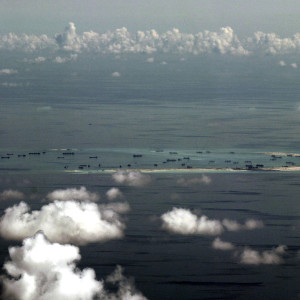The Pacific Ocean is the largest body of water on Earth, covering one-third of the planet’s surface. It is also home to some of the world’s busiest sea lanes and key trade routes, making it a critical strategic location for global superpowers. For decades, the United States has been trying to dominate this vital waterway, and there are several reasons.
The Pacific is strategically important to the United States for several reasons.
First, it is home to some of the world’s most important shipping routes, crucial to the global economy. The United States relies heavily on trade with Asia, and much of this trade traverses the ocean. Controlling these shipping routes ensures the United States can maintain access to critical markets.
Second, the Pacific is home to some of the world’s critical natural resources, including oil, natural gas and minerals. The United States has a strong interest in securing these resources for its use and the benefit of its allies in the region.
Third, the Pacific is home to some of the world’s most important military bases and installations, including those in Hawaii, Guam and Japan. These bases are strategically located to allow the United States to project its military power across the region. They are critical to maintaining stability in the Asia-Pacific region.
Another reason the United States is also trying to dominate the Pacific is because of China’s rise as a superpower. China has become increasingly assertive in the region and rapidly expanded its military capabilities. This has caused concern among the United States and its regional allies, who see China’s rise as a threat to their security.
The United States has responded to China’s rise by increasing its regional military presence and building alliances with other countries. The United States has also been working to strengthen its economic ties with regional countries to counter China’s growing influence.
In addition to these efforts, the United States has been working to contain China’s military expansion. The United States has been increasing its military presence in the South China Sea, a significant point of contention between China and its neighbors. The United States has also been building alliances with other countries in the region to constrain China’s military expansion.
The United States faces several challenges to its dominance in the Pacific. One challenge is China’s growing military power, as it has rapidly expanded its capabilities and developed advanced weapons systems that could potentially challenge the U.S. military in the region. China’s naval investments and increased presence in the South China Sea have also raised tensions with neighboring countries and the United States. Additionally, the rise of other regional powers like India and Indonesia poses economic and military challenges.
The United States faces internal challenges, including debt, which have led to budget cuts for the military, limiting its ability to invest in new weapons systems and maintain readiness. The U.S. military’s readiness and training have also been affected by deployments in various global hotspots, potentially affecting its ability to respond to threats in the Pacific.
Finally, the United States needs to address its relationships with allies in the region. It faces challenges with the Philippines due to concerns over human rights abuses and the Philippines’ shifting focus toward China.
Overcoming these challenges and maintaining strong alliances will be crucial for the United States to continue asserting its regional dominance.


